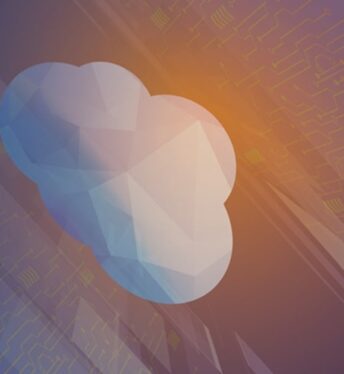Managing an industrial environment requires steady vigilance. Even simple mistakes can lead to down time, waste, and long term consequences. In today’s environment, communication must be quick and dependable. Industry 4.0 innovations meet this challenge by implementing connectivity across industrial operational technology (OT) in order to enable real-time monitoring.
Enable optimized industrial environment with our Smart Manufacturing services. Click here!
What is Remote Monitoring in Manufacturing?
Remote monitoring tracks a machine’s real-time data, allowing operators to track performance metrics without being physically present at the equipment’s location. Leaks, maintenance, vibration, emissions, data, pressure, voltage, and other preventable hazards can all be monitored with remote monitoring.
Because industrial and manufacturing units are not limited to single-located buildings and typically span many sites, remote monitoring aids technical employees in a variety of ways. Many industrial manufacturers concentrate on network-compatible equipment so that other components and wireless monitoring systems can be easily controlled remotely.
Remote monitoring also makes it easier for the manufacturer to keep track of all of the different processes. Record security and retention, for example, might be challenging with traditional paper-based systems.
Intelligent automation enables real-time manufacturing information. Click here and learn more!
How it Works
Robust industrial remote monitoring systems connects directly to sensors and legacy infrastructure to provide an instant data insights and asset tracking for industrial processes. The following are a few key features of an industrial remote monitoring system:
- Real-Time Dashboards: Leveraging IoT sensors and networks, even non-computerized legacy systems can provide a real-time view of performance data to a decentralized dashboards. These offer customizable views that aggregate data from multiple sources in order to enable real-time visualization of operational data. With the use of AI and Machine Learning, these dashboards can eventually provide actionable insights and predictive maintenance scheduling.
- Remote Monitoring & Controls: Sophisticated Industrial monitoring platforms will not only enable operators to access web based performance data and dashboards from a phone or tablet, but also enable remote control capabilities. This allows agile responses to unplanned events or potential restasks to accommodate for sudden changes caused by supply chain disruption or otherwise.
· Remote Controlled Set Point Updates: The scale of industrial environments can span across multiple locations and multitude of process machinery. Robust monitoring systems not only provide visibility, but can enable remote access and changes to process control set points or programmable logic controllers (PLCs).
The above points describe the functionality that remote monitoring systems provide. However, it is useful to understand how the networks collect data when deciding how to implement such systems. The following shows what variables remote monitoring systems use to provide accurate real-time data:
Pressure
A room’s pressure status is a critical metric that must not differ from the standard values. Shifting results suggest that airflow patterns have been disrupted, potentially polluting the controlled area. The pressure measurements from these devices can be sent into analytics, which displays the pressure profile for convenient monitoring and generates an alarm system for when the set values are exceeded. As a result, maintenance processes to troubleshoot the problem are activated.
For HVAC-related services such as clean rooms and air handling units, pressure monitoring is critical (AHU). The pressure in these systems is primarily used to monitor airflow between purified and contaminated sections and to assess the integrity of filters. Often, these systems are located in difficult-to-access regions, such as the technical floor for AHUs. Pressure remote monitoring enables for continuous monitoring without time needed for operators to access the physical location.
Vibration
The health of mechanical and spinning components such as motors and compressors can be determined through remote vibration monitoring. Vibration monitoring is used as part of a preventative maintenance plan that predicts breakdowns before they occur. These plans can be further augmented with machine learning to ensure that operators are given ample notice of when intervention is necessary.
Current and Voltage
Voltage and current measurements are critical metrics that describe the state of electric power. Electricity measurements reveal important information about the health, linked load status, transmission line, and wiring of power producing equipment. This also aids in the detection of any issues with related components like the transformer, switchgear systems, or electrical panels. These variables are used by analytics to calculate and measure performance, as well as to trigger alarms when an abnormality arises
Monitoring of Emissions
Emissions sources are frequently found in inaccessible regions. Due to high temperatures in boilers and power sources, concerned technicians may not be able to access the emission sources during operations. This has an impact on data monitoring quality and restricts the frequency with which data is collected.
Process Variables
Remote monitoring systems keep track of a machine’s vital functions and describe how it reacts to various manufacturing phases. Pulse counts, run times, and alarms are all useful factors for implementing remote monitoring and identifying process variables. Run times are used to track the total number of hours a machine has been running during the manufacturing process.
These metrics then influence output tracking and product planning in order to assist supply chain teams in swiftly responding to demand or disruption. It also eliminates data errors, such as those caused by human error in traditional paper-based systems.
Over 20K vehicles tracked per month on separate assembly lines. Read the Case study here!
Benefits of a Remote Monitoring System
Industrial remote monitoring systems are a solution that is both cost-effective and simple to implement. Here are a few of the benefits these systems provide:
Maximize Visibility
By collect and view real-time data from all of your assets, including older and fragmented equipment, in one place. Start leveraging real-time operational data across your organization by connecting remote assets or existing supervisory control and data acquisition (SCADA) systems.
Maximize Efficiency
To minimize downtime and improve productivity, identify, diagnose, and address issues in real time. Live pump vibration and temperature monitoring, for example, warn you to potential problems so you can avoid interruptions.
Improved Customer Service
To provide the finest customer service, track and optimize process factors such as flows, temperatures, and levels. Always-on analytics for pump efficiency and other KPIs give teams real-time information for better capital planning.
We helped expand loading capacity and automate tax steps for this manufacturer. Click here!
Examples of Technologies that Support Remote Monitoring Systems
It is important to note that remote monitoring systems are enabled and enhanced by several other technologies. Here are a few examples:
Industrial Internet of Things (IIOT)
This series of internet connected sensors and devices can deployed at all stages of the manufacturing process in order to enable remote monitoring. The devices are built with reliability, scalability, and flexibility in mind and can even augment legacy equipment to ensure reliable asset tracking. Built for durability, these devices can be deployed in the field to remote locations for long periods of time, monitoring your high-value systems for years.
Data Recovery and SCADA Configuration
SCADA components such as human-machine interfaces (HMIs) and programmable logic controllers can be monitored remotely (PLCs). During a software upgrade or program re-installation, HMIs and PLCs frequently require troubleshooting.
Traditionally, an engineer or technician would approach the machine and component’s compartment with a computer or laptop loaded with software and a communication cord to manually interface with the component. This takes time to coordinate resources, and production suffers as a result. The appropriate personnel can readily access SCADA components using remote monitoring by executing the action from their workstations.
Cloud
While remote monitoring systems can provide real-time insights, implementing cloud networks are vital for enabling decentralized access to process dashboards. This ensures that data visualization can be made available at any time and on any device. Furthermore, cloud networks enable relevant parties across the value chain to receive and send real-time updates.
Artificial Intelligence
AI bolters predictive maintenance and machine learning capabilities that enable remote monitoring systems to offer refined recommendations and repair scheduling. This also enables event modeling to show how machinery will perform under certain conditions or the length of time required to achieve certain results.
AI is transformation industrial logistics! Read our guest Trends blog to find out how.
Enable Industrial Remote Monitoring with Stefanini
Developing machine learning that accurately translates data into actionable insights requires a careful examination of the unique realities that make a successful. Our team of experts will examine your processes and use their knowledge to ensure that machine learning projects are utilizing meaningful data sets and driving automation. Ready to get started? Contact us today to speak with an expert!



















